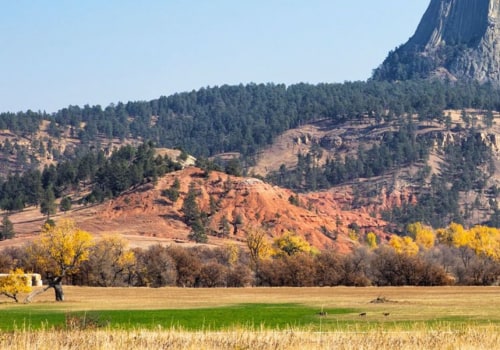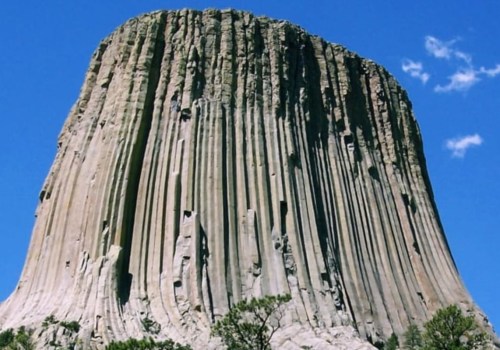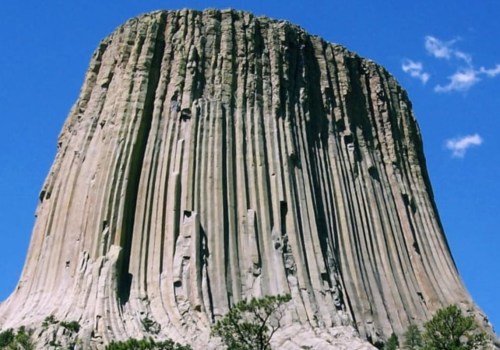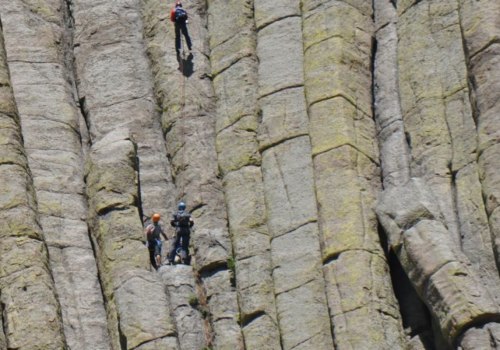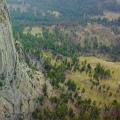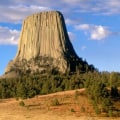Devils Tower Wyoming is an impressive geological formation that has captivated the imaginations of people for centuries. Located nearly 1,300 feet (395 m) above the Belle Fourche River, thousands of visitors enjoy the Devils Tower every year and it's a challenge for any adventurous climber. But how was this majestic structure formed?The simplest explanation is that Devils Tower is a laccolite, a small intrusive body formed by magma that cools underground and is later exposed by erosion. In 1907, scientists Darton and O'Hara proposed that Devils Tower should be an eroded remnant of a laccolit.
This theory could explain why the columns of Devils Tower are so large. Devils Tower is an ancient volcanic plug, once covered by sediment. As volcanic rocks slowly cooled, isolated by sediments, large columns could form. Only subsequent erosion exposed the unusual shape of Devils Tower. However, some mysteries surround the formation of the columns.
The cooling experiments were performed on small samples, only eight inches in length. Geologists are still puzzled by the details that control the formation and pattern of columns in large bodies of volcanic rock. In nature, joints can form only if the rock is brittle enough and grows over time from cooling from the outside to the still warm and soft inside inside the intrusion. The column joints develop approximately at right angles to the cooling surfaces, which are generally the tops or bottoms of lava flows, the walls of a magma chamber, or a volcanic conduit. In the case of the Devil's Tower, the columns are tilted toward the base, which also suggests that the cooling surface, the walls of the volcanic plug, were tilted outwards. But why the columns become almost vertical, and therefore a challenge for climbers, in the reconstructed core of the Devil's Tower Intrusion is a bit of a mystery.
Geologists assume that the tectonic forces and chemical composition of volcanic rocks influence the distribution of heat within the intrusion. As the joints follow isotherms (lines connecting points of the same temperature), perhaps the modern geometry of Devils Tower reflects the yet understudied mechanisms of magma placement in Earth's upper crust. This formation was created when magma (volcanic rock molten inside Earth) was placed in place underground. At the time Devils Tower was formed, the surface of the surrounding land was almost 915 m (3,000 feet) higher than it is today. After the magma hardened and cooled, erosion occurred. There are two theories about how Devils Tower was formed. One theory holds that Devils Tower is a laccolito.
A laccolite is a large mass of igneous (volcanic) rock that penetrated through sedimentary rock beds but did not actually reach the surface, producing a rounded bulge in upper sedimentary layers. The other theory is that Devils Tower is a volcanic plug or neck of an extinct volcano. The composition of volcanic material that forms Devils Tower suggests that magma body was quite thick when it formed, which allowed it to maintain its shape. A thinner magma body would form a hard layer over wider area that resists erosion and remains on flat plateau. But because it was relatively thick, magma became massive lump forming its visible shape. The magma then solidified preserving Devils Tower. Wooden Leg, a Cheyenne from north recounted another legend told to him by old man as they traveled together through Devil's Tower between 1866 and 1868. The Devil's Tower is made up spectacular vertical columns of igneous rock with five or six sides each. There is evidence that dramatic volcanic activity accompanied Flood which would explain magma intrusion that initially formed Devils Tower underground.
Located nearly 1,300 feet (395 m) above Belle Fourche River thousands visitors enjoy Devils Tower every year and it's challenge for any adventurous climber. On evolutionary time scale rock that forms Devils Tower has relatively young age 40 million years. The Kiowa and Cheyenne say that huge brown bear raked spire Devil's Tower northeastern Wyoming from Tree Rock to Kiowa from Bear's Lodge to Cheyenne while people huddled on top. As rain and snow continue to erode sedimentary rocks surrounding base of tower more Devils Tower will be exposed. Since creation took place some 6,000 years ago according Bible Devils Tower could not have formed millions years past. Children have sisters take bear to Devil's Tower and trick him into thinking they have climbed rock. If Devil's Tower had been exposed through slow erosion earth lot things about tower would be different. O'Harra (from South Dakota School Mines) theorized that Devil's Tower should be eroded remnant laccolito. Some these wooden stakes are still intact and are visible tower when walking 1.3 mile (2.1 km) Tower Trail at Devil's Tower National Monument. Eventually receding waters divided into large canals cut deep valleys and in this case formed Belle Fourche River Valley exposed Devil's Tower.
